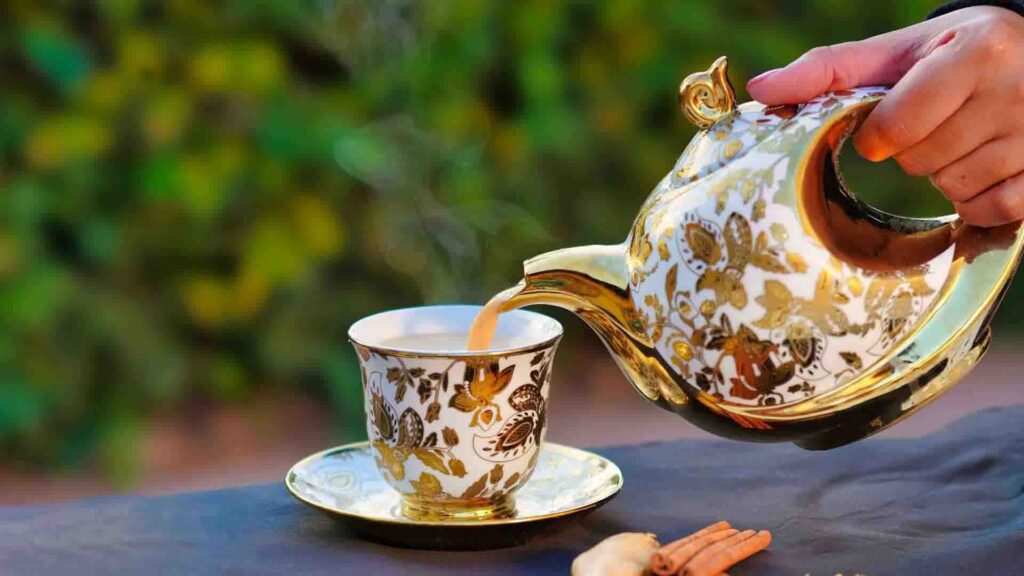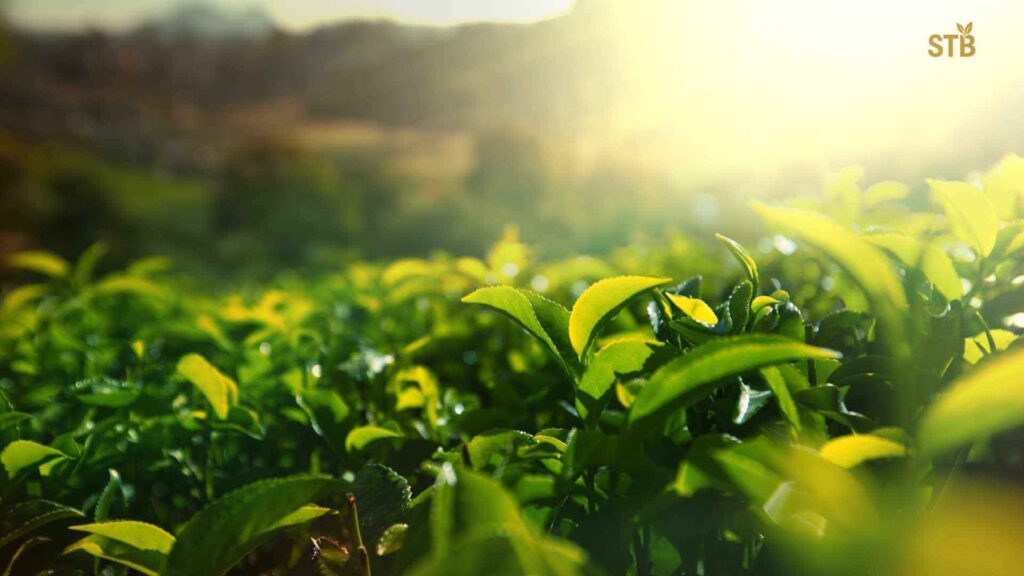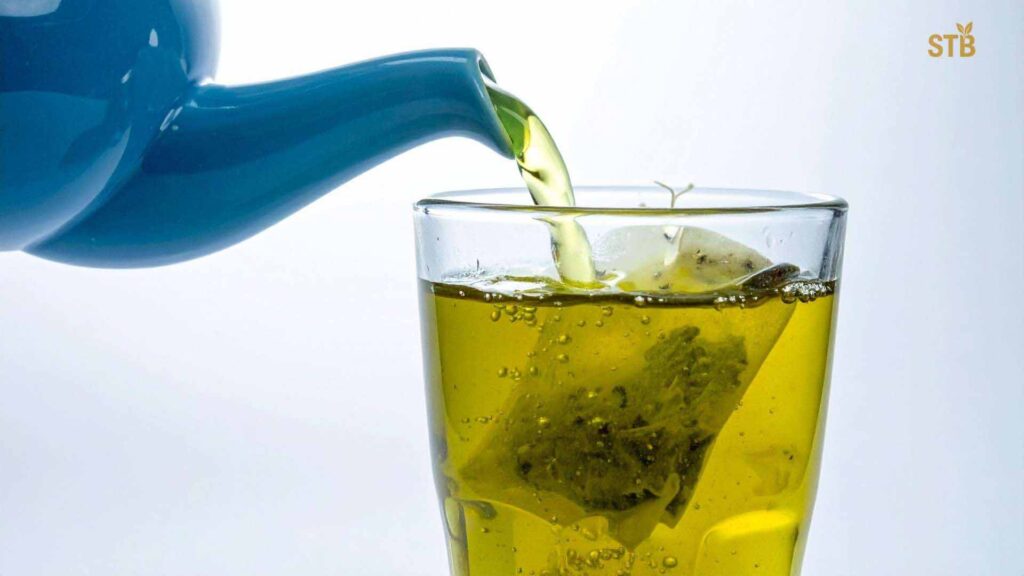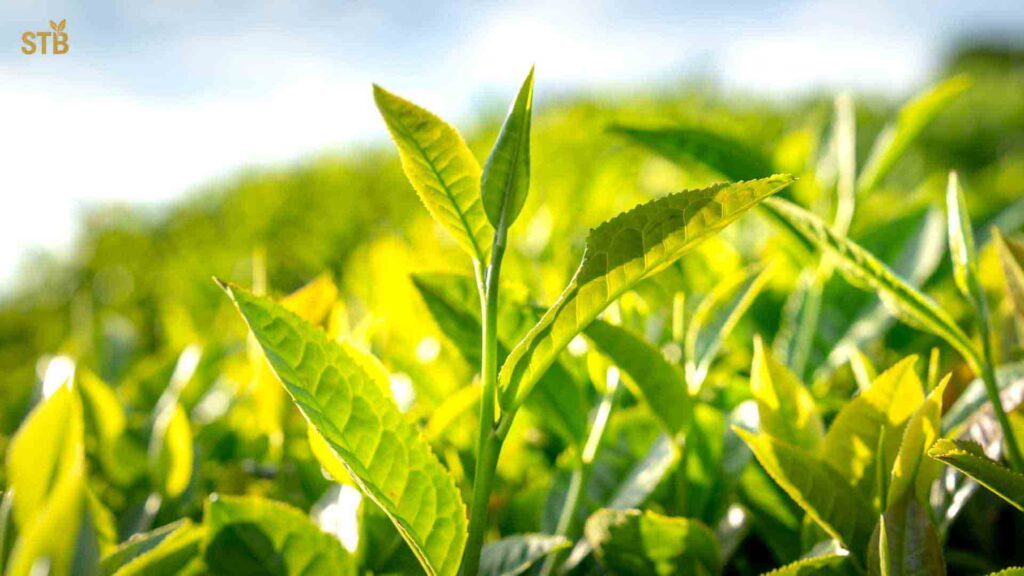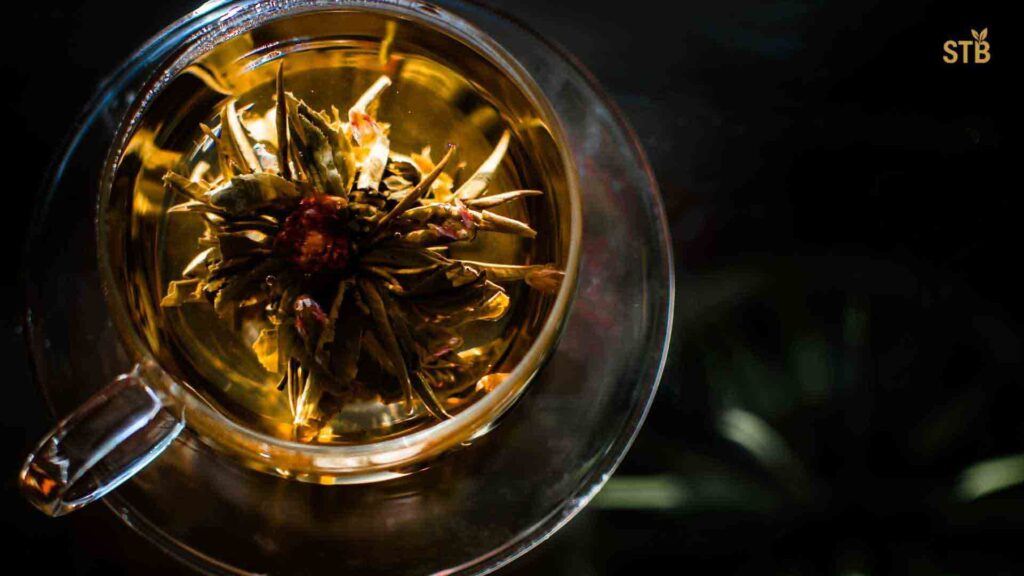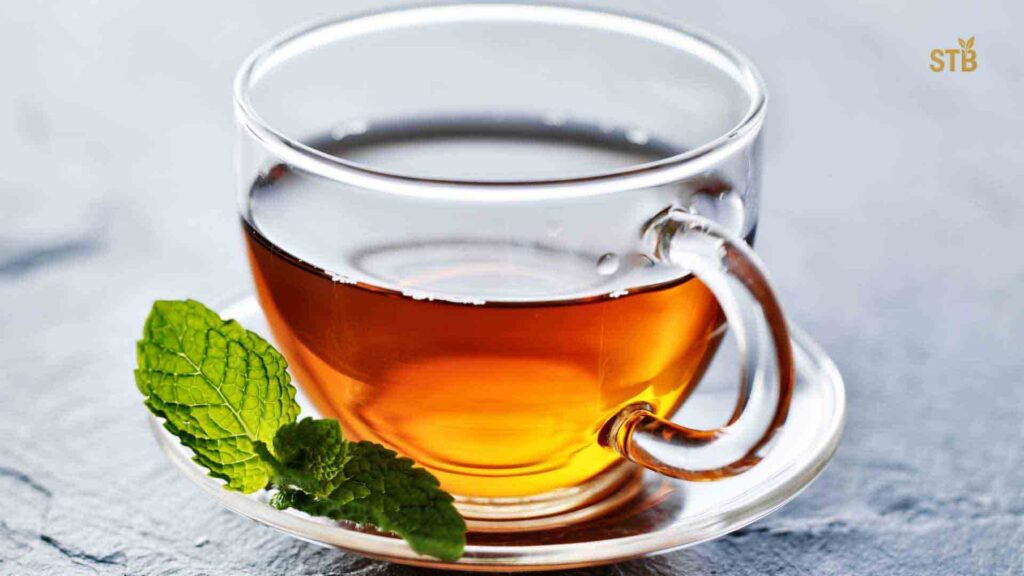In Bangladesh, few things unite people like a steaming cup of chai. Known locally as dudh cha, or simply milk tea, this comforting drink is the lifeblood of social life, part of daily routines and special occasions alike. From the bustling streets of Dhaka to the tranquil tea gardens of Sylhet, milk tea knits the nation together. From dawn “Cha khaben?” greetings to late-night addas (hangouts), offering and sharing sweet, milky tea is a gesture of warmth and hospitality.
The cultural significance of milk tea extends into folklore and superstition. For instance, many cha-wala (tea sellers) follow a long-standing belief that the first pour from a fresh kettle must be given to a customer, as keeping it for themselves would bring bad luck and drive away business. Another common saying passed down to children is, “Drink tea and you’ll turn dark,” a parental strategy to deter children from consuming what was once considered an adult luxury.
These stories and rituals underscore how milk tea has been woven into the fabric of everyday life, hospitality, and communal gathering. The cultural preference for this rich brew presents a key market challenge for other, more delicate teas, like green tea, which is often perceived as too grassy or light for the local taste.
This article explores why milk tea reigns supreme in Bangladesh: from its colonial history and evolution to its modern role as a cultural staple.
A Brewed Heritage: History of Milk Tea in Bangladesh
Bangladesh’s rich tea heritage began during the British colonial era, when the first commercial tea garden (Malnicherra in Sylhet, 1854) was established. Over decades, tea transformed from a luxury to an everyday staple. Today, around 97 million kilograms of tea are produced annually, placing Bangladesh among the world’s top producers. Throughout this journey, one style has become iconic: a strong black tea brewed with milk and sugar. In fact, as STB Leaf’s blog notes, “black tea reigns supreme” in Bangladesh, usually served milky (the classic dudh cha).
In practical terms, milk tea in Bangladesh typically involves boiling robust CTC (crush-tear-curl) black tea leaves with a mix of half water and half fresh whole milk, then adding sugar to taste. Street vendors at roadside tongs (tea stalls) constantly stir and re-boil the brew, creating a rich, creamy drink.
This basic recipe has deep roots: even after Independence, “cha khaben?” (Want some tea?) remained a common greeting. Over time, creative variations emerged (think spicy masala chai or smoky clay-cup tandoori chai). These innovations show how Bangladeshis have made the drink their own – from village hearths to Dhaka tea cafés, the core brew stayed the same.

The Milk Tea Ritual: A Symbol of Hospitality and Community
In Bangladesh, drinking milk tea is more than quenching thirst—it’s a social ritual. As journalist Tazri Marwa Ahmed observes, tea is a “symbol of hospitality and friendship, and nothing brings people together like a warm cup of tea”. Guests are typically welcomed with a steaming cup of sweet, hot milk tea. Offices, shops, and homes often pause for a “cha break” in the afternoon, and families share morning and evening tea as daily rituals.
Roadside tea stalls (called tongs or tong ghor) serve as communal hubs across the country. Tens of thousands of these small shops brew tea over charcoal fires, pouring it from height into cups to create froth. A Daily Star report notes Dhaka alone has about 160,000 tongs, “perfuming the air with the scent of brewing tea”.
Each cup is enriched with condensed milk and sugar, vigorously stirred, and served to a queue of regulars. Whether in a village marketplace or a Dhaka neighborhood, even the humble clay cup (kulhad) of hot milky tea conveys warmth and welcome.
- Hospitality: Offering milk tea is a universal gesture of welcome. Even in rural homesteads, elders insist on serving fresh hot dudh cha to guests, reflecting the belief that sharing tea is a mark of respect.
- Everyday Ritual: Tea marks transitions in the day. Many Bangladeshis have their first cup at dawn and another after dinner; it’s hard to imagine breakfast without milky tea. The phrase “cha khaben?” is as common as saying “hello” in some regions.
- Community & Conversation: Tea stalls witness life’s events. As one cultural observer notes, the local tea stall “becomes the witness of almost all the happy and sad events of the neighborhood”. Over endless cups of chai, friends debate politics, swap stories, and build bonds in a collective spirit.
Tea’s role extends beyond just hot drinks: these stalls often broadcast news or play TV programs, and people exchange ideas while sipping from clay cups or steel tumblers. The practice crosses social divides—despite upscale cafés, many Bangladeshis of all ages prefer the authenticity of a roadside dudh cha.
This communal habit reflects Bangladesh’s collectivist culture: people gather in public places to share tea and companionship. In short, milk tea is truly part of the Bangladeshi way of life.
Brewing Tradition: How Bangladesh’s Milk Tea is Made
Bangladeshi milk tea starts with simple ingredients and a brisk technique. Street vendors use strong CTC black tea leaves from local gardens, prized for their brisk, malty flavor. The standard recipe blends equal parts water and whole milk in a pot, brings it to a rolling boil, and then adds a heaping teaspoon of tea leaves per cup. After 4–5 minutes of simmering, sugar is stirred in for sweetness. You’ll see the brew change from light brown to a creamy orange-brown as it simmers.
At home, a quick shortcut is common: brew plain black tea and then mix in sweetened condensed milk. This hack replicates the rich color and taste with minimal effort. However, traditional dudh cha from street tongs is vigorously boiled. One observer describes the process: “the strong brew is poured into cups, then enriched with condensed milk and sugar, vigorously stirred, and served”. This aeration enhances aroma and gives the tea a consistently smooth finish.
Bangladeshis also love spiced chai: adding ginger, cardamom, cloves, or cinnamon yields warming masala chai. In winter, a cup of hot ginger-milk tea is a comforting tonic. Another local twist is malai chai (cream tea): vendors boil the tea extra long so a thick cream (malai) forms on top of the milk. That creamy layer is then mixed in, giving malai chai a famously indulgent texture. (Malai chai is especially popular in parts of Sylhet and Dhaka, often scented with cardamom or saffron.)

A Flavor for Every Palate: Varieties and Innovations
Bangladeshi tea lovers are adventurous. Beyond the classic dudh cha, some popular varieties include:
- Masala Chai: Milk tea brewed with spices like cardamom, ginger, cloves or cinnamon. Perfect on a cold, rainy day.
- Tandoori Chai: A smoky tea prepared by brewing milk tea, then serving it in a clay cup (kulhad) heated in a tandoor oven. The hot burnt clay adds an earthy aroma.
- Green and Herbal Teas: While black milk tea dominates, green tea (often plain, without milk) and herbal infusions (mint, chamomile, lemongrass) are gaining fans for their mild flavor and health image.
- Seven-Layer Tea (Saat Rong Cha): A famous novelty from Sreemangal. In a tall glass, vendors layer seven different flavored teas and syrups; each separates into a distinct band. The result is a rainbow of sweet, spicy, and fruity notes, symbolizing Bangladesh’s creative twist on tradition.
- Bubble/Boba Milk Teas: Urban cafés now serve cold, tapioca-pearl milk teas. These sweeter, iced drinks (classic black, matcha, fruit flavors) appeal to younger crowds, but they complement rather than replace the steaming street chai.
These variations showcase Bangladesh’s creativity with milk tea. Even fusion drinks appear in city cafés (e.g. ginger-lemon iced tea or cardamom lattes). Yet, despite modern twists, the traditional hot milk tea remains a perennial favorite for its bold taste and comfort.
Milk Tea Calories and Health
Milk tea is indulgent, so understanding its calories and nutrition is important. A standard cup (about 240 ml) of Bangladeshi milk tea, if made with whole milk and minimal sugar, has roughly 60–70 calories. However, street servings often include liberal sugar or condensed milk, which can push a serving well over 100 calories. For example, a cup with 2 teaspoons of sugar and ½ cup of milk might total 120–150 calories or more (even higher with tapioca pearls or extra cream).
Despite its sweetness, milk tea offers some nutritional benefits. It provides calcium, protein and vitamin D from the milk, plus antioxidants (flavonoids) from tea leaves. Spices like ginger or cardamom bring in compounds with digestive or anti-inflammatory effects. Unlike coffee, tea contains L-theanine—an amino acid that promotes relaxation without drowsiness. These factors can make dudh cha a calming, comforting beverage in moderation.
Key nutritional highlights per cup (approximate):
- Calcium & Protein: From milk, supporting bones and muscle health.
- Antioxidants: Flavonoids in black tea may support heart health.
- Spices: Ginger, cardamom, etc., which add vitamins and aid digestion.
- Hydration: A cup of tea is mostly water, contributing to daily fluid intake.
- Caffeine: Roughly 30–40 mg (about half a cup of coffee), enough for alertness without jitters.
For a healthier milk tea: Use low-fat or plant-based milk to reduce saturated fat, and ask vendors for less sugar (say “kom chini” for low/no added sugar). Limiting extras like malai or cream to occasional treats will also cut calories. By balancing these choices, you can enjoy the comfort and ritual of dudh-cha while keeping it a smart part of your diet.
Why Milk Tea Reigns (Even Over Coffee)
While coffee shops have emerged in Dhaka’s urban landscape, milk tea remains the default daily drink for most Bangladeshis. The reasons blend tradition and taste: tea’s milder caffeine profile and cultural fit make it ideal. STB Leaf’s wellness blog explains that tea “wins for gentler caffeine” and fewer side-effects compared to coffee. Indeed, a strong hot cup of milk tea is often considered more relaxing than a jittery espresso.
Culturally, coffee lacks the heritage that tea holds. Corporate offices or clinics might offer occasional coffee, but the familiar comfort of a roadside dudh-cha is unmatched. Many people even combine tea and coffee in one drink (a “dirty chai latte”) rather than abandon tea altogether. In a sense, trendy youth may sip iced matcha or espresso now and then, but the classic local dudh-cha endures. For most Bangladeshis, the question is not why tea, but why not—because every gathering feels incomplete without it.

Learn More on STB Leaf’s Blog
For readers hungry for tea knowledge, the STB Leaf blog is a treasure trove. Read our post “The Journey of Bangladeshi Tea: From Garden to Cup” to see how Sylhet’s climate shaped national flavors. Check out “Tea and Wellness: Why Tea is Healthier than Coffee” for more on tea’s benefits. Each article weaves history, culture, and science into the story of Bangladesh’s beloved brew.
Conclusion and Takeaway
Milk tea’s reign in Bangladesh isn’t an accident of taste alone; it’s woven into the social fabric. Every aspect of life—from business meetings to family gatherings—is punctuated by tea time. As STB Leaf’s research shows, offering milk tea is the ultimate gesture of warmth, helping strangers bond and neighbors stay friends.
In essence, milk tea is the social heartbeat of Bangladesh. It’s more than a drink; it’s a daily ritual, an icebreaker, and a comfort in every season. So the next time you crave connection or a cozy pause, remember the humble cup of dudh-cha Bangladesh’s beloved brew.
Ready to Brew Your Own Bangladesh Tea Experience? Browse STB Leaf’s online store for premium Sylheti teas and blends. Don’t miss out—subscribe to our newsletter for tea tips and special offers, and join thousands of lovers who celebrate Bangladesh’s dudh-cha every day. Share a cup of warmth—because in Bangladesh, milk tea is the taste of home.
FAQs about Milk Tea in Bangladesh
Q: What is dudh cha?
A: Dudh cha literally means “milk tea” in Bengali. It’s the classic Bangladeshi tea of strong black tea brewed with milk and sugar. The name highlights its main ingredient: fresh milk.
Q: What is malai chai?
A: Malai chai is milk tea topped with a layer of clotted cream (malai) that forms when the milk boils long. It’s an indulgent, creamier version often scented with cardamom and sold at specialty stalls.
Q: How do I make authentic Bangladeshi milk tea at home?
A: Boil equal parts water and whole milk, then add crushed black tea leaves (CTC variety) and simmer for 4–5 minutes. Stir in sugar or sweetened condensed milk to taste. Strain into cups and serve hot.
Q: Are there popular milk tea shops or chains in Dhaka?
A: Yes. Dhaka has many cafés offering bubble (boba) milk teas and masala chai lattes, but traditional milk tea is still mostly enjoyed at street tongs. Many Bangladeshis favor these local stalls for authenticity and price.
Q: How many calories are in a cup of Bangladeshi milk tea?
A: A plain cup (about 240 ml) without extra sugar has around 60–70 calories. However, with added sugar or condensed milk (common on the streets), a cup can easily reach 120–150 calories or more.
Q: Is milk tea good for you?
A: In moderation, yes. Milk tea provides calcium, protein, and antioxidants from the tea. Spices (ginger, cardamom) can aid digestion. The caffeine is milder than coffee, and tea contains L-theanine which calms the mind. But be mindful of the sugar and fat: use low-fat milk and less sugar to enjoy it more healthily.
Q: What is the difference between dudh cha and Indian chai?
A: They are essentially the same. Both are milky, sweet, spiced teas A: A: made with strong black tea. The specific spice blend may vary by family or region. In Bangladesh, it’s often called dudh-cha, while in India it’s called chai or masala chai, but the drink itself is very similar.
Q: Why do Bangladeshis serve tea to guests instead of coffee?
A: Tradition and warmth. Serving hot dudh-cha is an age-old custom. Sharing fresh hot tea is a sign of respect and hospitality. Even businesses and meetings typically offer tea first. Tea’s comforting sweetness and aroma are simply ingrained in Bangladeshi culture.
Q: Can I visit tea gardens in Bangladesh?
A: Yes! Sylhet’s tea estates (like Malnicherra) welcome tourists for tours and tastings. Visiting these gardens lets you see how the tea that ends up in your dudh-cha is grown, plucked, and processed.
Q: How does milk tea’s popularity affect Bangladesh’s tea industry?
A: High domestic demand for dudh-cha has made Bangladesh a net importer of cheaper teas, but it also guarantees a stable market for local growers. The tea sector supports rural jobs and communities: each cup sold helps fund schools, roads, and livelihoods in tea regions.

